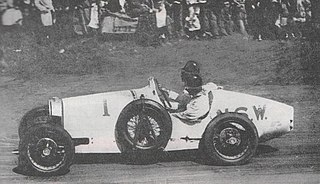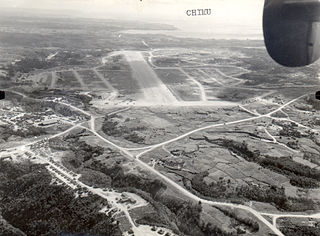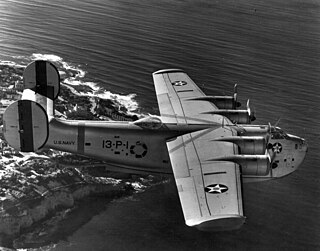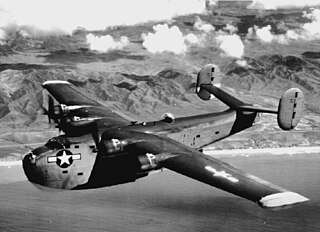Related Research Articles
Coronado may refer to:

The Consolidated Model 28, more commonly known as the PBY Catalina, is a flying boat and amphibious aircraft that was produced in the 1930s and 1940s. In Canadian service it was known as the Canso. It was one of the most widely used seaplanes of World War II. Catalinas served with every branch of the United States Armed Forces and in the air forces and navies of many other nations. The last military PBYs served until the 1980s. As of 2021, 86 years after its first flight, the aircraft continues to fly as a waterbomber in aerial firefighting operations in some parts of the world.

The Kawanishi H8K was a flying boat used by the Imperial Japanese Navy Air Service during World War II for maritime patrol duties. The Allied reporting name for the type was "Emily".

The Douglas YOA-5 was an Amphibious aircraft designed for the United States Army Air Corps. Although a prototype was built, it did not enter production.

The Martin PBM Mariner was a twin-engine American patrol bomber flying boat of World War II and the early Cold War era. It was designed to complement the Consolidated PBY Catalina and PB2Y Coronado in service. A total of 1,366 PBMs were built, with the first example flying on February 18th, 1939 and the type entering service in September 1940, with the last of the type being retired in 1964.

The Consolidated Aircraft Corporation was founded in 1923 by Reuben H. Fleet in Buffalo, New York, the result of the Gallaudet Aircraft Company's liquidation and Fleet's purchase of designs from the Dayton-Wright Company as the subsidiary was being closed by its parent corporation, General Motors. Consolidated became famous, during the 1920s and 1930s, for its line of flying boats. The most successful of the Consolidated patrol boats was the PBY Catalina, which was produced throughout World War II and used extensively by the Allies. Equally famous was the B-24 Liberator, a heavy bomber which, like the Catalina, saw action in both the Pacific and European theaters.

The PB2Y Coronado is a large flying boat patrol bomber designed by Consolidated Aircraft, and used by the US Navy during World War II in bombing, antisubmarine, medical/hospital plane, and transport roles. Obsolete by the end of the war, Coronados were quickly taken out of service. Only one known example remains, at the National Naval Aviation Museum at Naval Air Station Pensacola, Florida. Before WW2 large flying boats were important for long distance international routes, and during the ability to land on water without a land-based airstrip was useful. It proved to be good supporting aircraft in the Pacific War, which often required transport across long distance of oceans in harm's way, to places with no prepared airstrips.

The Consolidated R2Y "Liberator Liner" was an airliner derivative of the B-24 Liberator built for the United States Navy by Consolidated Aircraft.

The Consolidated P2Y was an American flying boat maritime patrol aircraft. The plane was a parasol monoplane with a fabric-covered wing and aluminum hull. The aircraft was also made by Martin as the P3M, due to an open production contract.

The Consolidated Model 17 Fleetster was a 1920s American light transport monoplane aircraft built by the Consolidated Aircraft Corporation.
The Naval Air Transport Service or NATS, was a branch of the United States Navy from 1941 to 1948. At its height during World War II, NATS's totaled four wings of 18 squadrons that operated 540 aircraft with 26,000 personnel assigned.

The Curtiss XBTC was a prototype single-seat, single-engined torpedo/dive bomber developed during World War II for the United States Navy. Four aircraft were ordered, powered by two different engines, but the two aircraft to be fitted with the Wright R-3350 radial engine were cancelled in late 1942, leaving only the pair using the Pratt & Whitney R-4360 radial. By this time, Curtiss Aircraft was overwhelmed with work and the Navy gave the XBTC-2 prototypes a low priority which delayed progress so the first flight did not take place until the beginning of 1945. One aircraft crashed in early 1947 and the other was disposed of later that year.

The Douglas XP3D was a prototype American patrol flying boat of the 1930s. A twin-engined high-winged monoplane, the P3D was produced by the Douglas Aircraft Company to equip the US Navy's Patrol squadrons, but despite meeting the Navy's requirements, the rival Consolidated PBY was preferred owing to a lower price.

The Consolidated XB2Y was an American prototype single-engined dive bomber of the 1930s. It was intended to meet a United States Navy requirement for a carrier-based dive bomber, but was unsuccessful, only a single example being built.

William Bethel Thompson was an Australian racing driver. From Summer Hill, Sydney, he was active in motor sport from 1928 to 1936. His competition cars included various Bugattis, a Riley Brooklands and an MG K3. Although his career was not taken to the international level, he met with considerable successful in Australia, winning the Australian Grand Prix three times.

Chimu Airfield or NAB Chimu is a former World War II airfield on the Pacific coast of Okinawa. The airfield was inactivated after October 1945.

VPB-4 was a Patrol Bombing Squadron of the U.S. Navy. The squadron was established as Patrol Squadron 102 (VP-102) on 1 March 1943, redesignated Patrol Bombing Squadron 4 (VPB-4) on 1 October 1944 and disestablished on 1 November 1945.

VPB-13 was a patrol bombing squadron of the U.S. Navy. The squadron was established as Patrol Squadron 13 (VP-13) on 1 July 1940, redesignated Patrol Bombing Squadron 13 (VPB-13) on 1 October 1944 and disestablished on 1 December 1945.

VPB-15 was a Patrol Bombing Squadron of the U.S. Navy. The squadron was established as Patrol Squadron 15 (VP-15) on 15 March 1943, redesignated Patrol Bombing Squadron 15 (VPB-15) on 1 October 1944 and disestablished on 23 November 1945.
VPB-100 was a Patrol Bombing Squadron of the U.S. Navy. The squadron was established as Patrol Squadron 100 (VP-100) on 1 April 1944, redesignated Patrol Bombing Squadron 100 (VPB-100) on 1 October 1944 and disestablished on 15 December 1945.
References
- Ray Wagner (1968). American Combat Planes . Doubleday & Company, Inc. p. 307.